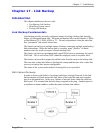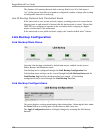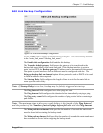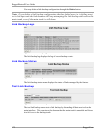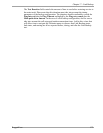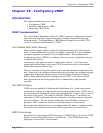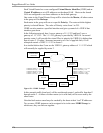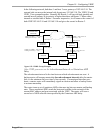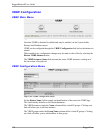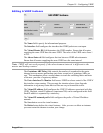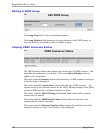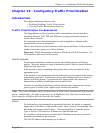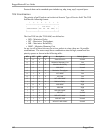
Chapter 18 - Configuring VRRP
Chapter 18 - Configuring VRRP
Introduction
This chapter familiarizes the user with:
• Configuring VRRP
• Enabling And Starting VRRP
• Obtaining VRRP Status
VRRP Fundamentals
The Virtual Router Redundancy Protocol (VRRP) eliminates a single point of failure
associated with statically routed networks by providing automatic failover using
alternate routers. The RuggedRouter VRRP daemon (keepalived) is an RFC 2338
version 2 compliant implementation of VRRP.
The Problem With Static Routing
Many network designs employ a statically configured default route in the network
hosts. A static default route is simple to configure, requires little if any overhead to
run and is supported by virtually every IP implementation. When dynamic host
configuration protocol (DHCP) is employed, hosts may accept configuration for only
a single default gateway.
Unfortunately, this approach creates a single point of failure. Loss of the router
supplying the default route or the router's WAN connection results in isolating the
hosts relying upon the default route.
There are a number of ways that may be used to provide redundant connections to the
host. Some hosts can configure alternate gateways while others are intelligent enough
to participate in dynamic routing protocols such as Routing Information Protocol
(RIP) or Open Shortest Path First routing protocol (OSPF). Even when available,
these approaches are not always practical due to administrative and operation
overhead.
The VRRP Solution
VRRP solves the problem by allowing the establishment of a “virtual router group”,
composed of a number of routers that provide a specific default route. VRRP uses an
election protocol to dynamically assign responsibility for the “virtual” router to one of
the routers in the group. This router is called the VRRP Master. If the Master (or
optionally its WAN connection) fails, the alternate (i.e. backup) routers in the group
elect a new Master. The new master provides the virtual IP address and issues a
gratuitous ARP to inform the network of where the gateway can be reached.
Because the host's default route does not change and MAC address is updated, packet
loss at the hosts is limited to the amount of time required to elect a new router.
VRRP Terminology
Each physical router running VRRP is known as a VRRP Router. Two or more VRRP
Routers can be configured to form a “Virtual Router”. Each VRRP Router may
participate in one or more Virtual Routers.
RuggedCom 175





